Introduction to Onion seed germination
Onion belongs to the Amaryllidaceae family with botanical name Allium cepa. Onions are easiest to grow from bulbs, but it is also possible to grow them from seeds. Onions are an important food crop worldwide. Quality of Onion seeds depends on several factors, such as environmental conditions during growth of mother plant and seed development, location of seeds on the plant, time of seed harvesting, storage conditions, and methods of pre-sowing seed treatment. Growing Onions from seed are easy and economical. Onions grow best in a soil with good organic matter and a pH level between 6.0 and 7.8. In this article we also discussed below topics;
- What month is the best time to plant Onion
- How do you germinate Onion seeds
- How long do Onion seeds take to sprout
- How to plant Onion seeds
- Onion seed germination temperature
- Is it better to grow Onions from seed
- How long does Onion seed take to germinate
- Process for germinating Onion seeds
- Onion seed germination period
A step by step guide to Onion seed germination
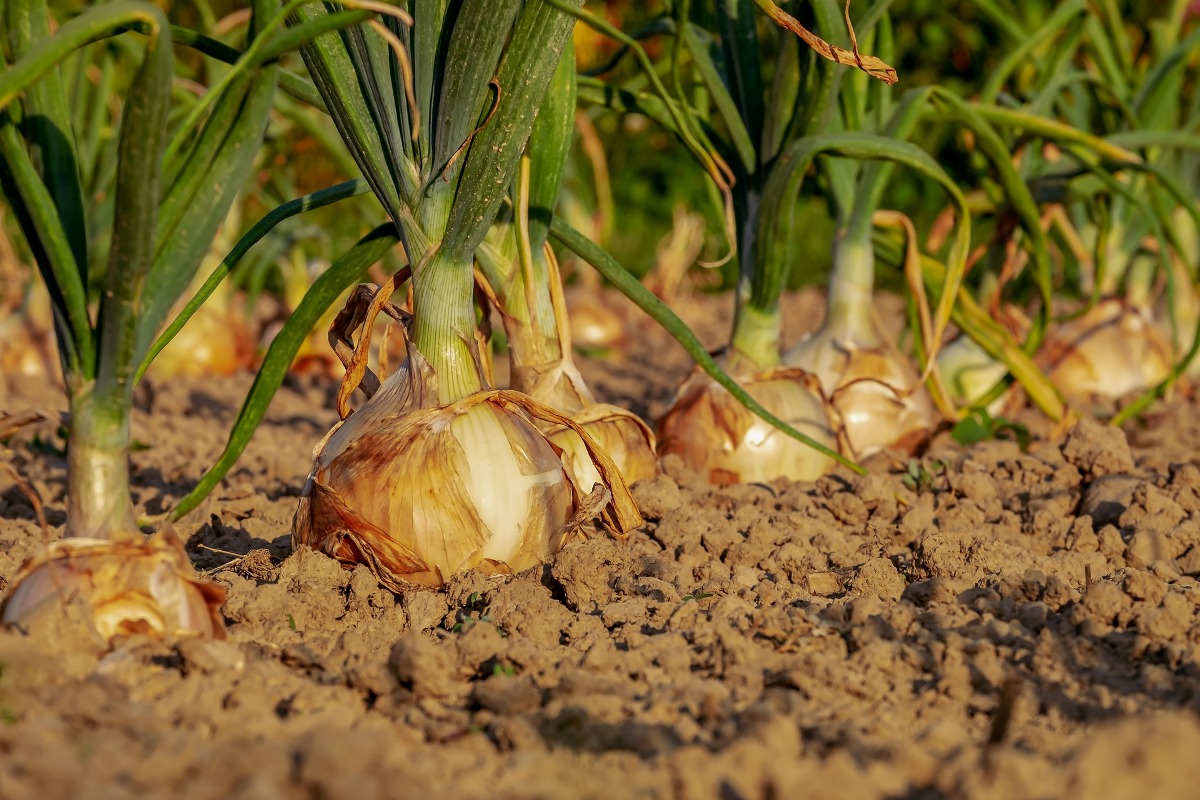
Different varieties of Onions
The best varieties of Onions are;
Short-day Onions varieties are Georgia Sweet, Sweet Red, Granex, Red Creole, Red Burgandy, White Bermuda, Vidalia, and Southern Belle, Texas Super Sweet, and Texas Sweet White, etc.
Intermediate-day Onion varieties are Cabernet, Candy Onion, and Red candy apple, etc.
Long-day Onions varieties are Alisa crag, White sweet Spanish, Copra, Walla Walla Sweet, Paterson, and Yellow Sweet Spanish, etc.
Start with fresh Onion seed and seed starting mix
Onion seeds can be kept for 2 years in a cool and dry place such as a properly monitored seed storage box. Onion seed germination rates fall as the age of the seed, and though they have 3-year-old Onion seeds that sprouted well, germination is always highest with fresh seeds. Though, purchase a fresh bag of seed-starting mix each spring as a safety precaution against soil-borne diseases. Onion seedlings stay in pots for up to 10 weeks, so use a soil medium that’s unlikely to host diseases.
Spacing for Onion seeds/plants and seed rate
The optimum Onion spacing is 15 cm between the rows and 10 cm between plants. Seeds are drilled on the rows opened at 10cm space and 0.5 to 1cm depth against the bed length and slightly covered with soil. An Onion seed rate of 4 to 5 kg is sufficient for raising seedling required for one-acre land.
You may also check this: Organic Maize Farming, Cultivation Practices.
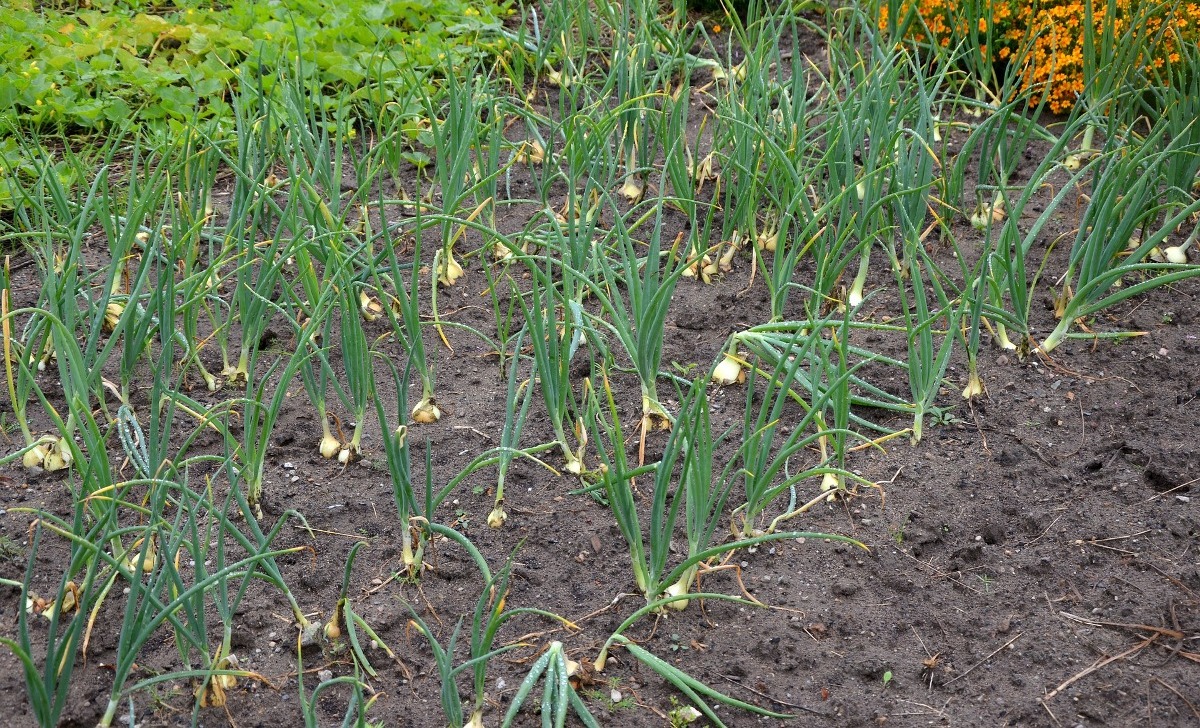
Onion seed germination time and temperature
Typically seed germination occurs within 7-10 days, soil temperature affects this process. For instance, the cooler the soil temperature, the longer it will take for Onion seeds to germinate up to 2 weeks. Onions are a cool-season crop and the germination of Onions is slow at 6 to 7°C, the optimum germination temperature range is 20 to 25°C, and the maximum temperature is 40°C.
The process of Onion seed germination
Onion seed starting is very easy. Onions grow best in fertile, well-draining soil and this should also be worked with organic matter, such as compost. Seeds can be planted directly in the garden bed. Though, when growing Onion seed, some people prefer to start them indoors. This can be done in late autumn and the best time for planting Onion seeds outdoors is in spring, as soon as the soil can be worked in your area. Put them about an inch (2.5 cm.) deep in the soil and about half an inch or more apart. If planting rows, and space them at least one and a half to 2 feet apart.
Onions are cool-season and biennial plants, but they are grown commercially as an annual crop. The Onion seeds germinate during the first season and the plants grow vegetatively, eventually forming a bulb. Although Onion seeds will germinate at temperature level as low as 2°C, a temperature of at least 13°C is required for 70 percent seedling emergence within 2 weeks of planting. The optimum temperature range for Onion seed germination, emergence, and plant growth is 20° to 25°C. The early growth rate of Onion plants is slow compared to other cool-season crops due to slow leaf area development and low light interception.
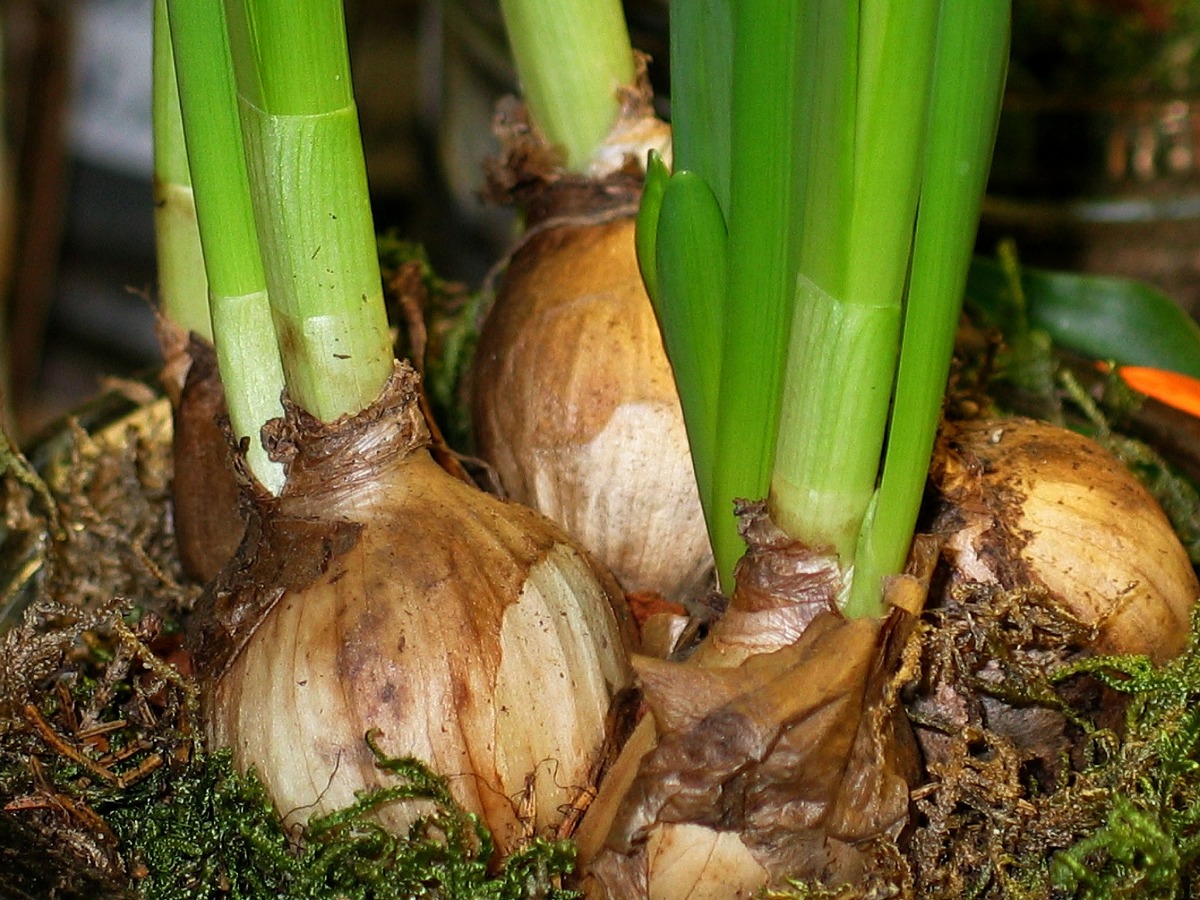
When it comes to Onion seed germination, temperature plays an active role. While typically germination occurs within 7 to 10 days, soil temperature affects this process. For instance, the cooler the soil temperature, the longer it will take for Onion seeds to germinate up to 2 weeks. Warm soil temperatures, on the other hand, can trigger Onion seed germination in as little as 4 days.
Once seedlings have sufficient leaf growth, thin them down to around 3 to 4 inches apart. Transplant Onion seedlings that were started indoors about 4 to 6 weeks before the last expected frost or freeze date, provided the ground is not frozen. Onion plants have shallow roots and need frequent irrigation throughout the growing season. However, once the tops begin to layover, usually by late summer, watering must be stopped. At this point, Onions can be lifted and growing Onion seed plants is an easy, inexpensive way to keep an unlimited amount of Onions on hand just when you need them.
Planting Onion seeds by winter sowing
If you want to skip the hassle of grow lights, heating mats, and other seed-starting equipment, growing Onion seeds by winter sowing is the way to go. It works like a charm and is very easy. All you need is a packet of seeds, a plastic lidded container, and some potting soil formulated for seed starting. Start planting Onion seeds by winter sowing anytime between early December and mid-February.
Here are the steps use to winter sow Onion seeds;
- Poke three or four ½ inches wide drainage holes in the bottom of the plastic container. Also, make two ½ inches wide ventilation holes in the top of the lid.
- Open the container and fill it with 3 inches of potting soil.
- Sprinkle the Onion seeds on top of the soil, casually spacing them about 1/4 to ½ inches apart.
- Cover the Onion seeds with a sprinkling of potting soil and water them in well.
- Put the lid on the container and then label it with a piece of tape and a permanent marker.
- Once the Onion seeds are planted, put the container in a protected, shady spot outdoors.
The seed treatment of Onions
Seed treatment with Thiram by 2 gm/kg of seed + Benomyl 50WP by 1 gm/liter water effectively controls damping-off and smut diseases. After chemical treatment, seed treatment with bioagent Trichoderma viride by 2 gm/kg of seed is recommended, it helps in reducing early seedling diseases and soil-borne inoculums. Treating Onion seed with a fungicide like Apron Star is recommended to avoid fungal diseases like damping off.
Seed treatments and enhancements can improve stand establishment, survival, quality, and appearance of Onions. Seed enhancements contain seed priming and seed coating procedures. Seed treatment insecticides and fungicides can protect crop yield potential from losses to Onion pests and diseases.
Onion seed can be treated in many ways before planting to improve the quality and yield potential of the resulting crop. The term “seed treatment” refers to the application of insecticides and/or fungicides to the seed to help protect the seeds and young seedlings from insect pests and fungal pathogens. On the other hand, the term “seed enhancement” refers to other processes, such as seed coatings or pelleting, seed priming, or post-priming procedures that are intended to improve the handling and planting of the seed, reduce the time to termination, and increase the uniformity of seedling emergence. And non-treated Onion seed is also available.
The first step in germination is the imbibitions of water by the seed and these imbibitions of water start the physiological processes that allow the seed to break dormancy and germinate. One way to speed the process of Onion seed germination after planting is by priming the seed before planting. Seed priming is defined as pretreatment of seeds by different methods to improve seed germination rate, percentage germination, and improve the uniformity of seedling emergence by controlling the water available in the seed.
Typically seeds are soaked in a water solution to start the germination, but then they are dried before they sprout. Once planted, primed seed emerge quickly and more uniformly than non-primed seed. However, priming usually shortens the shelf-life of the Onion seed, so seed should be planted within 6 to 12 months of priming.
Sowing methods for Onion crop
Onion crop is raised by several methods, depending upon the circumstances of the farmers. These methods are;
- Transplanting,
- Direct seed sowing and
- Planting bulbs in the field.
Though, the method of nursery raising and subsequent transplanting is the best for high production and better quality.
- Transplanting – When the seedlings are 6-8 weeks old and 15 cm high, they must be removed from the nursery beds and transplanted in the main field at a distance of 15-20 cm between lines and 7-10 cm between plants or seedlings. Irrigate the field soon after transplanting and the transplanting should be done either in early hours or late in the evening to avoid the drying of seedlings. Care must be taken to discriminate the seedling with damaged roots or diseases.
- Direct seed sowing – Seed (16-20 kg) is sown by drill method to ensure seed depth 2-3 cm in lines at 30 cm apart. After 6 to 8 weeks, the spacing between plants is adjusted to 10 cm by thinning and gap-filling operations. This process requires more field labor for weeding at 10 days interval.
- Planting bulbs in the field – Small and medium-sized bulbs about 10 to 12 quintal are dibbled keeping 30 cm distance between lines and 15 cm between bulbs. Irrigation can be applied within 1 to 2 days after dibbling.
Irrigation requirement for Onion farming
You should not miss this: Hydroponic Drip System, Types, Advantages.
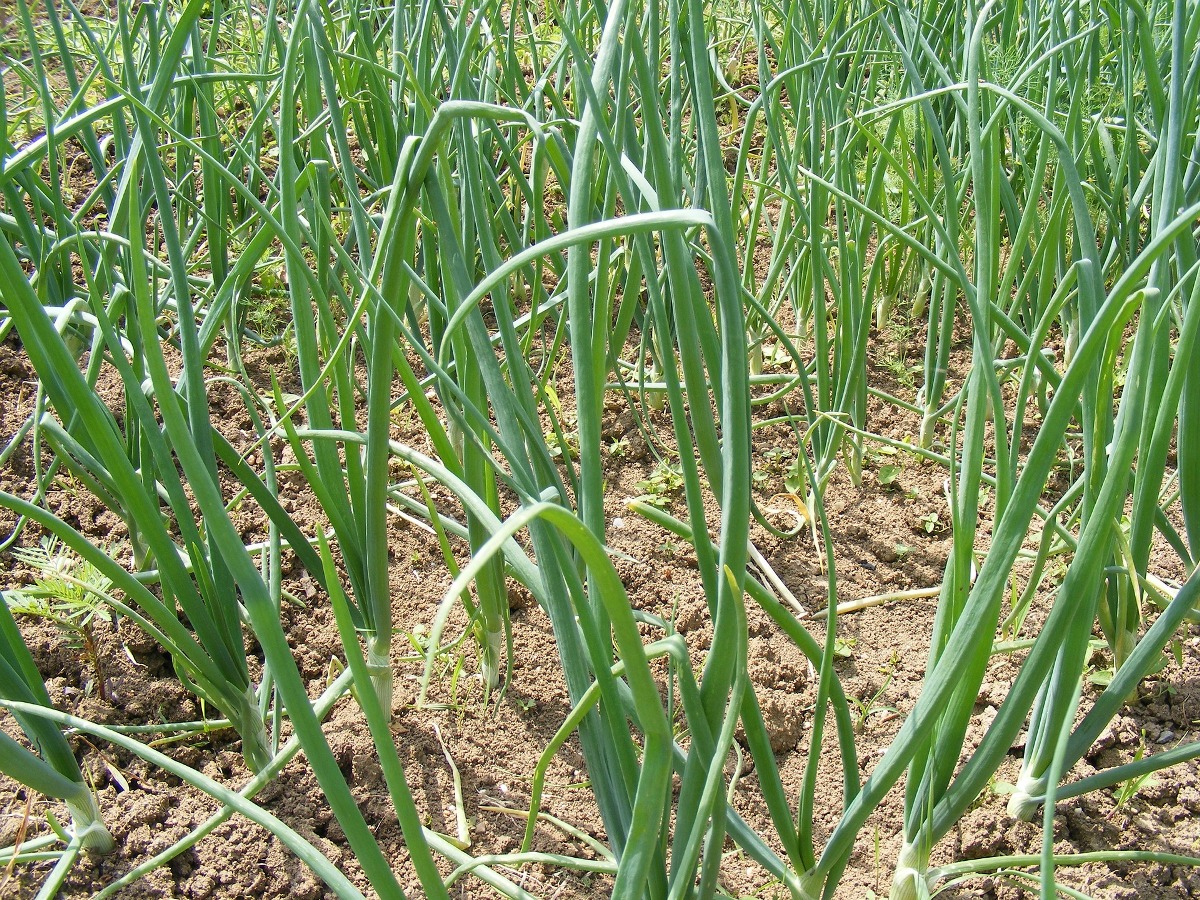
Sown Onion seed must not dry out and the soil surface must not be allowed to crust during the post-planting and pre-emergence periods, which can last 10 to 20 days after the initial irrigation. Since Onion seed is planted in the summer when temperatures are high, the sprinkler irrigation process is the best management practice for stand establishment. As they have a shallow root system, Onions require frequent irrigation or rainfall throughout the season.
The required amount and frequency of irrigation will depend on the irrigation process, soil type, and conditions, and weather (e.g., rainfall amounts and timing, temperature, evapotranspiration, etc.). The optimal time for Onion crop irrigation is when 25 percent of available moisture in the top 2 feet has been depleted. In general, an Onion seed crop will use 25 to 35 inches of water. With 70 to 80 percent efficiency, water applications of 35 to 45 inches can be required. If more water than that is being used, the frequency and length of irrigation must be examined or a different method of irrigation (e.g., drip, surge, or sprinkler) should be considered.
Diseases affected in Onion crop
Onion seed production requires low-humidity ambient conditions during the spring and summer season. Disease management, pollination, and seed maturation all are enhanced by warm temperature levels and low relative humidities. Foliage diseases are prevalent under humid conditions, and bees are poor pollinators during rainy weather. Postharvest seed drying is also achieved most easily in low humidity climates. Climates that are cool in the winter and warm to hot with low rainfall and low humidity in the spring and summer seasons are best suited for Onion seed production.
Onion harvesting and yield
Onion is ready for harvest in 5 to 6 months after transplanting depending on the variety. Bulb harvesting should be started when 50 to 75% neck fall occurs but this phenomenon occurs only during Rabi whereas, in Kharif season, based on the visual inspection only, bulb harvesting is done. The harvesting process is done by pulling out plants when tops are drooping but still green. Onion gives a yield of about 25 to 30 tones/hectare. Bulbs must be thoroughly cured before storage.
Commonly asked questions about Onion farming
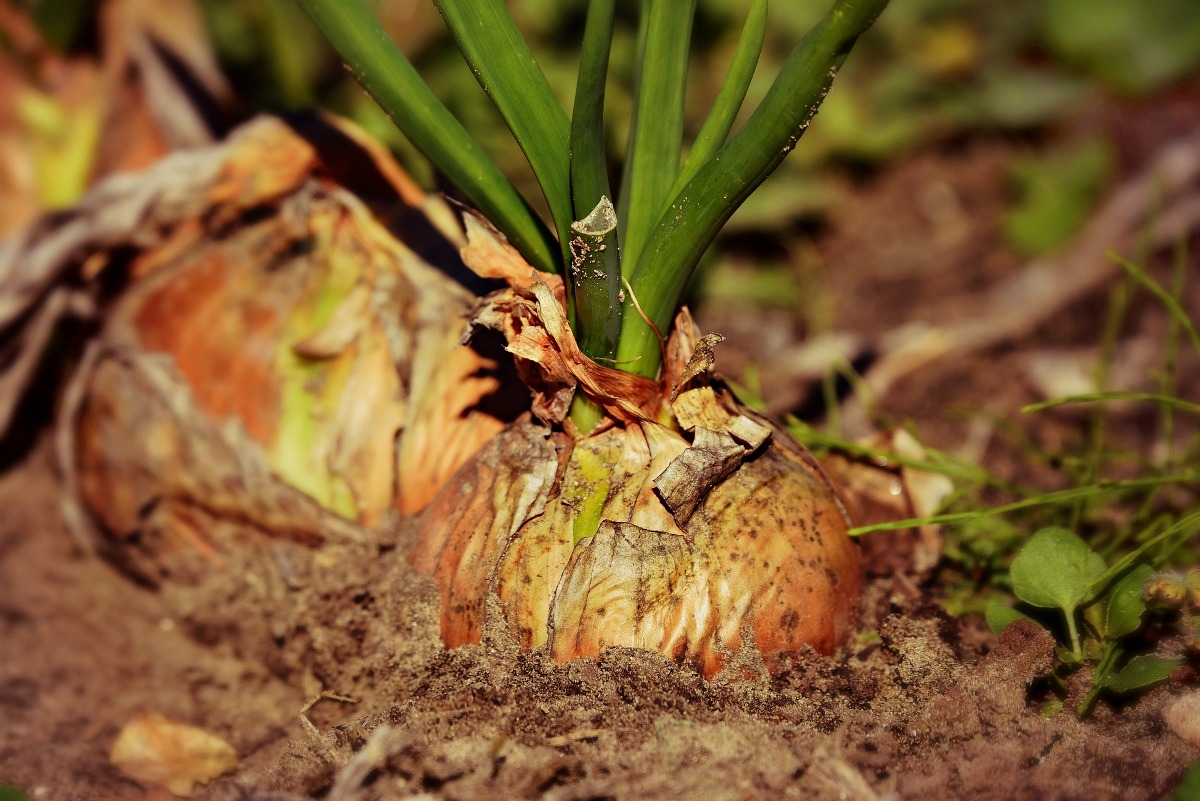
How many Onions do you get per acre?
A good harvest offers 20 to 25 tonnes per acre depending on the variety.
How many months do Onions take to grow?
It can take up to 5 months for plants to mature enough to harvest. When starting Onion plants from seed, allow the soil temperature to warm to at least 10°C before sowing.
Why won’t my Onion seeds germinate?
Onion seeds need warmth to germinate. If your Onion seeds got too cold, they won’t come up. If seedlings started sprouting and it got cold, well. You won’t have much luck. Onion seeds are smart, if they think it’s too chilly, they won’t sprout.
What is the best fertilizer for growing Onions?
Onion plants require a steady supply of nitrogen to form large bulbs. Side dress growing Onion plants in early and midsummer with about 1/2 cup nitrogen-based fertilizer. Use ammonium sulfate if the soil is alkaline because this fertilizer lowers the pH slightly.
Why are my Onions dying?
The tips of Onion leaves turn brown and have gradual dieback of the leaves down to the bulb. Then, this is a foliage disease known as tip dieback of Onions. It is suspected to be caused by the fungus Alternaria. It is associated with plants that are not growing properly.
Why Onion leaves yellowing?
Onion downy mildew disease is a common fungal disease that attacks Onions, chives, shallots, and salad Onions. It is widespread particularly in cool, damp, humid weather and wetter parts of the country. Affected leaves take on a grayish appearance, then turn yellow color, start to wither and collapse from the tips.
How many seeds does it take to grow an Onion?
The Onion seeds may take a couple of weeks to germinate. In late April or early May, transplant the seedlings to a fertile and well-drained spot in the garden. As with sets, place four plants in each planting hole, and space each bunch of 4 Onions about 6 inches apart.
In case if you are interested: How to Make Money from Organic Farming Business.
Hi sir/ madam.
I want to know that in how much temperature we can shift the onion nursery from bed to in field. Is it possible that we can shift it in month of June/ July here in Pakistan.
Khalid